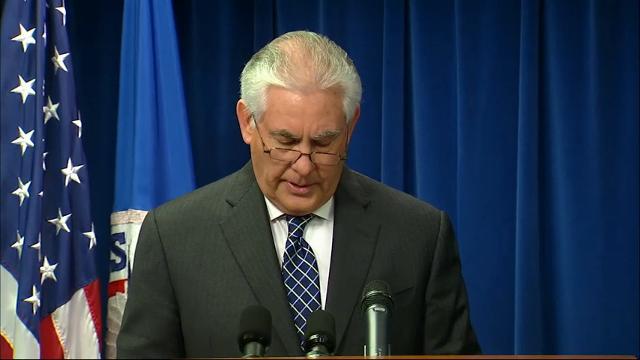
President Donald Trump on Monday signed a new version of his controversial travel ban, aiming to withstand court challenges while still barring new visas for citizens from six Muslim-majority countries. (March 6)
AP
NEW YORK — The Trump administration’s travel restrictions could be causing a chilling effect that is leading to a prediction that this city — the nation’s top international tourism destination — will see its first dip in foreign visitors since the recession.
The city projects it will see 300,000 fewer international visitors this year than it did in 2016, a 2.1% dip. It’s the first time that group of travelers has shrunk since 2008, according to NYC & Company, New York’s tourism arm.
“These restrictions are creating an image problem for many international travelers, regardless if they’re included in the ban or not,” says Chris Heywood, a spokesman for NYC & Company.
It’s not only the temporary travel ban against some Muslim-majority nations that the administration initiated Jan. 27, but the talk of a wall on the Mexican border, that is spurring international visitors to stay home, he says.
On Monday, the administration reissued the 90-day ban, this time against visitors from six nations, no longer including Iraq,
New York’s predicted tourism dip comes amid reports of a drop-off in flight searches and bookings to the U.S. A report released Monday by travel analytics firm ForwardKeys found that international bookings fell 6.5% in the eight days after President Trump’s initial travel ban was announced on Jan. 27.
When the courts intervened to stay enforcement of the ban at the start of February, reservations rebounded. They increased 2.2% in the next 12 days as compared to the same period in 2016.
Then, when word came on Feb. 17 that new restrictions would be coming, reservations dropped 4% over roughly the next week. The biggest drop-off occurred among potential travelers from the Middle East, Africa and Europe, the report said.
“Donald Trump’s on-off travel ban has created a roller coaster ride for the travel industry,” ForwardKeys CEO Olivier Jager said in a statement before the latest travel order was announced.
Flight comparison app Hopper found that searches from international destinations to the U.S. was lowest on the day that the initial restrictions were announced, plunging 17% from the level seen during President Obama’s final two weeks in the White House. The drop-off occurred globally, with U.S. bound flight queries falling an average of roughly 22% in 103 countries.
“We’ve seen larger declines in flight search demand corresponding to dates when the executive order has dominated the news cycle,” says Patrick Surry, Hopper’s chief data scientist. “It may be reminding travelers that there’s a lot of uncertainty around whether international travelers are welcome in the U.S., and flight search demand then drops.”
New York will still see a record number of travelers this year, some 61.7 million overall, 1 million more than last year, as more Americans visit the city, offsetting the drop in foreign tourism. But, officials say, domestic visitors don’t have the same financial impact as those traveling from overseas. While international visitors make up roughly 20% of New York’s visitors, they comprise 50% of the total amount that tourists spend while they are in the city, according to NYC & Company.
The city is launching a nearly $3 million ad campaign this month in several markets including Mexico, the United Kingdom, and Germany, designed to reassure wary travelers that New York is still a welcoming destination despite the proposals and rhetoric emanating from Washington.
“We will work tirelessly to do all we can to preserve our city’s tourism industry in the months ahead,” Fred Dixon, NYC & Company’s CEO, said in a statement.
International travelers are a financial boon to the U.S. economy. The U.S. Travel Association said that in 2015, the most recent year available, travel to the U.S. from abroad resulted in $246 billion in economic activity.
The group’s CEO Roger Dow said in a statement Monday that the latest proposed travel restrictions had a “substantially more cautious and deliberate introduction.”
However, “it doesn’t appear that the administration fully seized the opportunity to differentiate between the potential security risks targeted by the order and the legitimate business and leisure visitors from overseas who support 15.1 million American jobs,” Dow said. “The question remains whether the revised order did enough to mollify the prospective traveler from Canada, Europe, or elsewhere around the world who may have been put off by the initial travel ban.”
New York predicts first foreign visitor drop since 2008 – USA Today – USA TODAY

